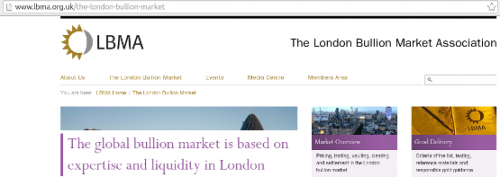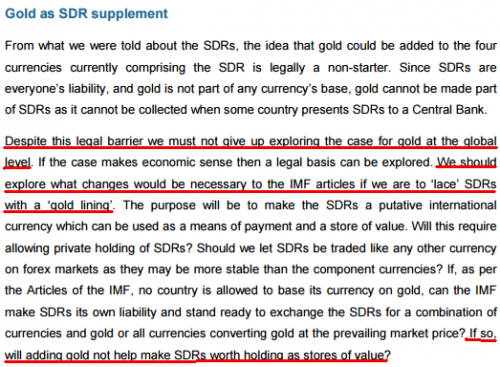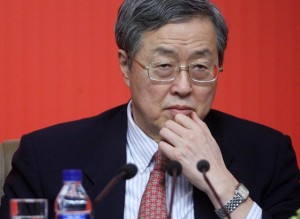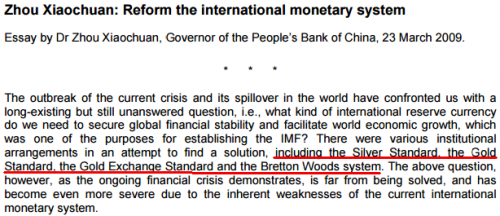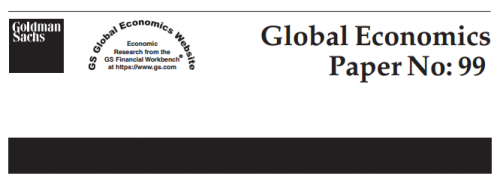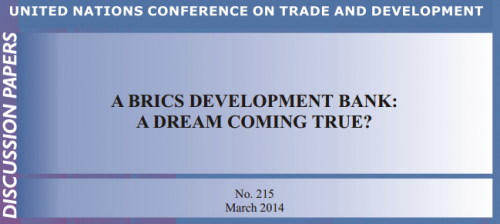Document:Masters of metal
| A startling and ominous analysis of progress towards an impending New world Order |
Subjects: IMF, BIS, BRICS, Globalisation, PBOC, NWO, LBMA
Example of: analysis
Source: Stateless Homesteading (Link)
★ Start a Discussion about this document
Masters of Metal: China, the Rothschild Fix, and the “New World Currency”
Lies, Damned Lies, and Forensic History
As regular consumers of alternative media have likely noticed, China’s voracious appetite for gold has been reported on ad nauseam in the wake of the 2008 Depression. Endless geopolitical and economic analysts have mused about the implications of Chinese gold accumulation, with most concluding (perhaps prematurely) that some form of gold-backed Yuan is on the horizon. Some extend this scenario further, optimistically declaring that the BRICS NDB (New Development Bank) and AIIB (Asian Infrastructure Investment Bank), led by China, will usher in a “New Golden Era” of progress and prosperity, spelling the end of the Western model of Central Banking tyranny.
The reason for this transfer of precious metals from West to East by the Anglo-American Establishment, these pundits prognosticate, is a simple and tragic combination of incompetence and malfeasance. The aged and corrupt West must end, and in the wake of its destruction, the Phoenix of the East must rise.
Does this narrative, however, have any basis in reality when viewed within the context of history? How have institutions traditionally defined as “Globalists” participated in satiating China’s gold fever? Is the hand of the Red Shield, infamously and intimately involved in the metals market for over 200 years, at work, even in the East?
And what, ultimately, do the answers to these questions spell for the “BRICS Saviour” meme?
To begin answering these questions, we must analyze the history of the London Bullion Market Association (LBMA) and the ignominious “Precious Metals Fix” that makes it all possible.
The (Global) Fix Is In
In 2010, the alternative finance community was set ablaze by the revelations of bullion trader turned whistleblower Andrew MacGuire, contending that JPMorgan and HSBC, operating as agents for the Federal Reserve, had suppressed the price of precious metals in an effort to silence the “Canary in the Coal Mine” amidst unprecedented money printing. By using managed selloffs via algorithmic trading bots, bullion banks drove down the price of “electronic/paper” metals certificates at the COMEX, effectively capping their price and ultimately driving them down to new 5-year lows.
The Commodities Futures Trading Commission (CFTC) deemed MacGuire’s claims credible enough to warrant further investigation; led by Bart Chilton, the CFTC’s probe into silver price manipulation ended in September of 2013 with the stunning declaration that no illegal activity had occurred:
“Based upon the law and evidence as they exist at this time, there is not a viable basis to bring an enforcement action with respect to any firm or its employees related to our investigation of silver markets.”
-CFTC Statement
What many fail to realize is that the CFTC’s conclusion is technically correct. JPMorgan and HSBC were not acting in violation of any legal structure; they were, in fact, merely implementing the dictates of the long-standing LBMA Metals Fix
Already we can identify the hand of the Anglo-American Establishment at work by way of the East India Company. The LBMA’s commentary on the nearly global “Silver Standard” of the 17th and 18th Century is not without consequence; the British Empire’s domination of the gold market of the era made subjugation of nations like China and India, rich in silver wealth, notoriously difficult to colonize.
The Opium Wars changed this nearly overnight. Beyond the engineered addiction and mercantile foothold the opium trade gave the East India Company in China, it also made way for the wholesale looting of China’s silver wealth:
“From China, the Company bought tea, silk and porcelain. The Chinese wanted silver in return. Over the next 100 years tea became a very popular drink in England, and there was a fear that too much silver was leaving the country to pay for it. To stop this happening, the Company became involved in a triangular trade by smuggling opium (a highly addictive and illegal drug) from India into China.
The Company grew opium in India. They were looking for something that the Chinese would accept instead of silver, to pay for the goods they bought at Canton. Opium was a valued medicine which could deaden pain, assist sleep and reduce stress. But it was also seriously addictive and millions Chinese became dependent on the drug.”
–British Library
With China gutted of her material wealth, the Chinese silver standard came to an end in November of 1935, a mere decade before the implementation of the first truly “Global Gold Standard,” the Bretton Woods agreement.
The path was set for a worldwide metals price-fixing mechanism, and the LBMA was more than happy to provide. Front-running the Bretton Woods agreement by decades, the LBMA’s own gold fix – run by N.M. Rothschild – was officially established in 1919:
By the LBMA’s own admission, the Rothschilds maintain this price fixing mechanism to the present, and seemingly, the sole beneficiary of their recent price suppressing actions is none other than China, the very country looted of monetary metals a century ago. Is this a rare act of benevolence from the Rothschild family, or do they have big plans for the East’s newfound wealth in the coming World Order?
The writings of the British analogue to the Council on Foreign Relations, Chatham House, seems to suggest the latter.
Chatham House Rule and the Gold-Backed SDR
Established in the wake of World War I at the Paris Peace Conference, the Royal Institute of International Affairs was created. Fulfilling the dream of the Last Will and Testament of Cecil Rhodes, the RIIA also birthed its more widely known American outpost, the Council on Foreign Relations. Its headquarters, Chatham House, have become the RIIA’s colloquial moniker.
As what many would contend is the world’s premier “Think Tank,” Chatham House has been far from bashful in exploring a wide range of topics, and in the wake of the “Great Recession,” gold and the IMF’s “Special Drawing Rights” (SDRs) have been chief among them.
While national Central Bankers like Ben Bernanke have been vocal in their opposition towards a remonetization of gold, the supranational level represented by groups like the IMF, Bank of International Settlements, the CFR, and Chatham House have been far more accommodating towards the idea of a return to a “partial gold standard.” Chatham House has gone so far as to create the “Chatham House Gold Taskforce” designed explicitly to examine gold’s role in a “multipolar World Order.”
This task force has yielded a number of fascinating forecasts. Take, for example, these 2011 comments by Lord Meghnad Desai, the Indian-born, British-naturalized member of the House of Lords and Chatham House member in a paper entitled, “Gold, the SDR, and Other Matters.”
Far from challenging gold’s role as a monetary metal, Chatham House is recommending the exact opposite: Nothing less than a gold-backed SDR to take the place of the dollar as World Reserve Currency, with calls for the IMF to make legal the monetization of gold. All this coming from a man who is a Professor at the Keynesian London School of Economics, lecturing chiefly on econometrics and Marxian Economics. Quite the curious blend of ideology, no?
Desai’s commentary is far from the only (seemingly) pro-precious metal rhetoric born of the “Chatham House Gold Taskforce.” Also included in the report were the writings of one Catherine Schneck of the University of Glasgow, entitled, “Adding Gold to the Valuation of the SDR,” directly echoing Baron Desai’s recommendation:
Introducing gold into the valuation of the SDR might achieve several goals:
- Re-introduce a role for gold in the international monetary system (meeting some calls for this to take place)
- Provide a counterweight to the impact of the depreciation/appreciation of the US$ (and other currencies) since gold price tends to be inversely related to US$
- Reduce vulnerability to the USD exchange rate (although this could also be achieved by reducing the USD weighting – but in favour of what currency? Euro is vulnerable, Japanese economy is not growing, UK is small)
Schneck, perhaps directly referring to Chinese gold acquisition, makes specific note of the RMB’s current exclusion from the SDR in the paper’s introduction. The inclusion of the RMB in the article also seems to imply that “reducing the USD weighting” as called for in bullet point 3 could indeed be “in favour” of the RMB in the future, overtly stating that the Euro, Pound, and Yen are unfit for the task:
The valuation of the SDR is based on a weighted basket of international currencies chosen for their convertibility/free usability (Article XXX(f)) as well as importance in international trade and foreign exchange reserves. These properties constrain the components of the basket: the RMB, for example, is not part of the SDR valuation because the RMB is not a fully convertible currency.
Schneck concludes her paper by recommending potential avenues to mitigate possible obstacles in implementing a gold-backed SDR. Manifestations of Globalist monetary magic could include:
Possible mitigation of obstacles
- Keep the gold share modest (proposed 5% of SDR value)
- IMF gold could be used to back the potential claims on gold from holders of SDR (at end August 2011 holdings = 90.5 million ounces with a market value of $164.1 billion – total allocations of SDR = SDR205 billion or $323 billion worth)
- Gold claims could be ‘residual’, i.e. gold could only be claimed when no convertible currency is available through voluntary agreements – this would reduce the strain on the IMF’s gold reserves
- Countries in surplus with substantial gold reserves could be designated to buy SDR for gold in the same way they may be designated to buy SDR with freely usable currencies
- Use gold only for valuation and not include any right to sell SDR for gold.
Allowing the IMF to issue more SDRs than they have gold hearkens back to the era of bank-issued Gold Certificates and their eventual monetary debasement; not a new scheme by any means. Nor are “residual” gold claims, which were commonplace during the Bretton Woods era. The last statement, “not include any right to sell SDR for gold,” would effectively ensure that gold could never be redeemed by “citizens” from banks, assuring gold coinage would never actually circulate.
A pseudo-gold standard if there ever was one.
The Chatham House Gold Taskforce’s premier publication, “Gold and the International Monetary System,” maintains the more typical Newspeak of Globalist documents with its somewhat reserved analysis; its most revealing passages, however, greatly reinforce the thesis already outlined herein.
3.3 The rise of the renminbi
In the light of the growing dissatisfaction with the US dollar as the world’s primary reserve currency, and given that neither of the other contenders for the top spot – the euro and the yen – is in a position to become the dominant player in the international monetary system, many more eyes are turning towards the renminbi as a possible answer, but this shift is expected to be a gradual process.
The document reiterates the rising China narrative, noting that China's recent advancements in the form of the recently-launched Shanghai Gold and Silver Exchange are a small stepin subverting the dollar as the World Reserve Currency:
Another small step in the gradual internationalization of the renminbi came with the announcement by the Hong Kong-based Chinese Gold and Silver Exchange Society on 17 October 2011 that it was launching a new service that allows institutional and retail investors to use their renminbi bank deposits to buy gold for the first time.
Ultimately, the Chatham House Gold Taskforce concludes that, while the RMB is a strong contender for reserve currency status, it still lacks one major prerequisite for the role Inclusion in the IMF's SDR basket:
Nonetheless, the strategy to internationalize the currency will be given an additional boost if the renminbi is included in SDRs. In 2009 China’s central bank governor called for the creation of ‘an international reserve currency that is disconnected from individual nations’, arguing that reform ‘should be a gradual process that yields win-win results for all’ (Zhou, 2009).
Chatham House also seems to advocate a digital, cryptographic version of gold as opposed to physical notes. Perhaps as a direct response to the rise of cryptocurrencies like Bitcoin and BitGold, perhaps as the implementation of a “One World” digital currency as foretold by Nicholas Rockefeller, Chatham House devotes an entire section of its policy paper examining “digital gold.”
Box 4.2: Digital gold currency
The search for new means of payment, spearheaded by advances in technology, led to a flurry of activity in the field of digital gold currency in the late 1990s. Since then, however, the track record of digital gold, a form of electronic money based on ounces of gold enabling users to pay each other in units that hold the same value as bullion, has been – to say the least – a mixed success. Digital gold advocates claim that it offers a truly global and borderless world currency system which is independent of exchange-rate variations and political manipulation.....
Moreover, digital gold currency offers recognizability, ensuring there is no need for special expertise in identifying the money, while advances in cryptography can make digital gold very difficult to forge
So it seems that the Anglo-American Establishment has lofty aspirations for China’s gold horde and the RMB after all. Regardless of the manner by which China’s reunion with precious metals has manifested, however, this Globalist plot coming to fruition is still dependent upon Chinese participation.
Is there any evidence to suggest that China desires inclusion into the SDR basket? Would they allow the West to use their gold as collateral against the SDR (or something akin to it) as a reserve currency as opposed to the Yuan?
Enter stage East.
Crouching PBOC, Hidden Bank of International Settlements
Meet the latest actor in our twisted drama, Zhou Xiaochuan
A Globalist by any objective metric, Xiachuan is the head honcho at the People’s Bank of China, effectively the Janet Yellen of Eastasia. Readers, look into the eyes of this man. If anyone were to lead the world’s return to “sound money,” a BRICS without usury, and a gold-backed Yuan utopia of gold-plated puppies and kittens, by necessity, it would have to be China’s most powerful Central Banker.
Think he can pull it off?
Unfortunately for those still steeped in the millieu of the “BRICS Saviour Paradigm,” I don’t think he particularly wants to. He probably never has, as long before Xiaochuan began China’s purchase of Rothschild “fire sale” gold via the LBMA, he joined the Board of Directors of the Bank of International Settlements.
For readers not yet aware of the specific role the BIS has to play in the “Rings Within Rings” structure of the Anglo-American Establishment, it is referred to by Georgetown Professor, Globalist insider, and whistleblower Carroll Quigley as the “apex” of the “powers of financial capitalism.”
“The powers of financial capitalism had another far-reaching aim, nothing less than to create a world system of financial control in private hands able to dominate the political system of each country and the economy of the world as a whole. This system was to be controlled in a feudalist fashion by the central banks of the world acting in concert, by secret agreements arrived at in frequent meetings and conferences. The apex of the systems was to be the Bank for International Settlements in Basel, Switzerland, a private bank owned and controlled by the world’s central banks which were themselves private corporations. Each central bank…sought to dominate its government by its ability to control Treasury loans, to manipulate foreign exchanges, to influence the level of economic activity in the country, and to influence cooperative politicians by subsequent economic rewards in the business world.”
-Professor Carroll Quigley, Tragedy and Hope
It is to this “apex” which Xiaochuan counts himself as a proud member of, and it is via this “apex” which he published his official position on Chinese precious metals, the future of the Yuan, and the SDR. The title of this BIS paper? “Reform The International Monetary System,” and its vision for the future is virtually identical to that of Chatham House and the Anglo-American Establishment.
If the Yuan is to become a gold-backed currency (let alone the World Reserve Currency), it will not be accomplished by the desires of the People’s Bank of China. It is not the RMB that Xiaochuan applies these grandiose aspirations to, but the IMF and its Special Drawing Right:
Presumably, a world in which the SDR is a “super-sovereign reserve currency” would also include the Yuan in the SDR currency basket. At least, it will if Xiaochuan and Chatham House have anything to say about it. And of all those shiny kilo bars of gold and silver recently re-homed to Shanghai?
Zhou would have them priced in SDRs in international trade. It seems the PBOC would see the Shanghai Gold Exchange as a mere clearing house as opposed to a physical exchange devoted to pricing outside the LBMA fix.
Xiaochuan’s damning statements as head of the PBOC and BIS Board Member are not his first documented foray into international financial debauchery. Precious metals researcher and forensic historian Charles Savoie contends that Zhou Xiaochuan had participated in the wholesale liquidation of “paper” silver contracts at the behest of the LBMA at the turn of the Century. If true, this would have effectively lowered the price of silver from 2000-2004 in favor of the COMEX pricing mechanism.
The Gold Anti-Trust Action Committee (GATA) pressed the LBMA on potential silver price manipulation via Chinese silver liquidation, much to the chagrin of Jeffrey Christian of the CPM Group, who referred to China’s paper silver dumping as a “myth.” A masterful PR move in providing an alibi of sorts for Xiaochuan’s silver manipulation, as the CPM Group is a 1986 spin-off of none other than the criminal banking syndicate known as Goldman Sachs.
The same Goldman Sachs that, in 2003, coined the term BRICS and “forecast” the rise of Brazil, Russia, India, and China in a paper entitled, “Dreaming With BRICs: The Path to 2050.” Bear in mind, this is a full four years before the BRICs even existed.
What incredible foresight the analysts at Goldman have! Or perhaps it’s insider knowledge? Maybe even assistance in drafting the BRICs “vision?” Whatever the case, it is to this “BRICS Dream,” the dream of Goldman Sachs, that the United Nations Conference on Trade and Development make reference to when calling on the BRICS bank to fund “sustainable development” projects throughout Asia
Some, when faced with the evidence of widespread collusion between financial Elites of West and East, paraphrase a passage of Sun Tsu’s The Art of War – “Keep your friends close, your enemies closer,” and perhaps this is indeed the ultimate goal of the People’s Bank of China.
But an equally prescient American saying also comes to mind: “Don’t let the fox inside the hen house.”
In Closing
Has the fog before the eyes of Free Humanity begun to dissipate? Hopefully enough to realize that the BRICS “anti-hegemon” are no friends of human autonomy. In viewing the BRICS NDB’s recent appointments to upper management, the organization’s participants are barely distinguishable from World Bank and IMF rosters, and while the controlled demolition of China’s financial crisis just begins to emerge, so, too, will the pre-arranged monetary “solution” to the woes it shall create, as outlined throughout this article.
An end to the “Debt and Death” paradigm will not come from national, supranational, or hierarchical structures, but from those seeking Freedom themselves. Unparalleled advancements in decentralization of trade and manufacturing. Truly local agricultural independence. Open-source software, not to mention news. Modern pioneers in liberty are already making great strides in these and many other fields, and it is from these men and women which hope springs eternal.
Not Zhou Xiaochuan’s Globalist gold horde and whatever “New World” monetary paradigm will be foist upon us in the wake of the next financial crisis.
